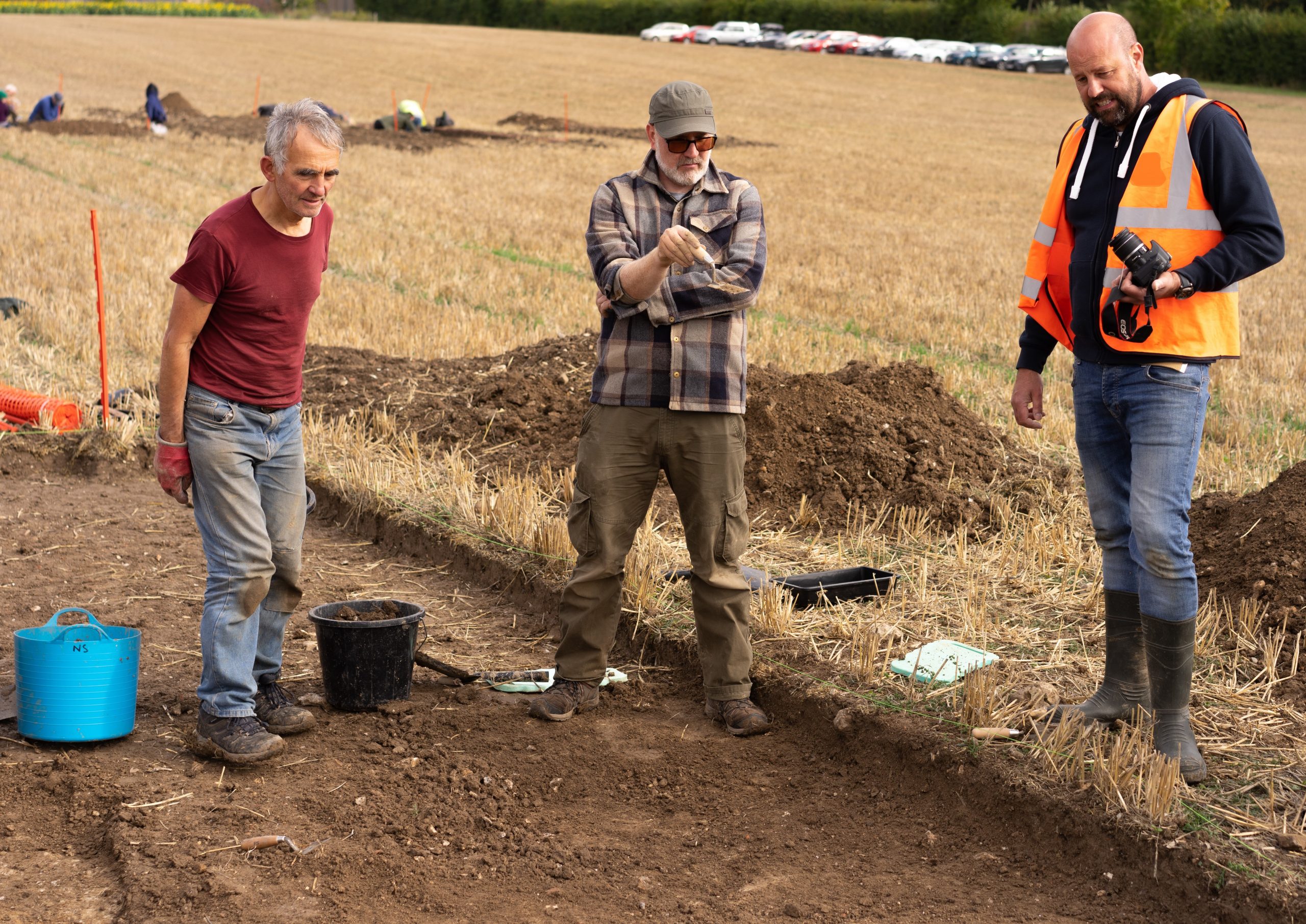
Archaeology doesn’t always have to be technically complicated. English archaeologists just used the open-access platform Google Earth to identify an ancient Roman villa equipped with a rare central heating system.
Members of the community-based Kent Archaeological Society were using the publicly available software, which is based on satellite imagery, to conduct a remote survey of their history-rich county, as part of the ongoing Trosley Heritage Project. As they were looking through the aerial views, linear crop markings on farmland near Trosley quickly caught the group’s attention.
On the ground, 50 local volunteers, led by site director Richard Taylor, found pottery and coins on the site, which turned out to be the structural ruins of a third or fourth-century Roman villa. Exploring an unexpected pillar led them to discover the remnants of a hypocaust, an ancient system for central heating.
“There’s hundreds of villas over Kent, but the fact there’s a hypocaust system is rare,” Taylor remarked in a statement.
Looking at an aerial view of the site on Google Earth, volunteers spotted the Roman villa (left) and a bathhouse (right).
To heat their spaces during the chilly British winters, affluent Roman communities lit a central wood fire and directed the air it heated through underground pillars, which spread the warmth across the interior floors, much like in a Turkish bath.
“Operating a hypocaust was expensive and required a significant workforce,” Taylor told KentOnline. “The Romans used laid tile for their floors and ceramic tile for their walls. Sealing the home’s interior was essential to prevent smoke and harmful gases from escaping into rooms.” Labor and raw materials to maintain such fires proved costly.
Hypocausts fell out of fashion when the Roman Empire crumbled, leaving native Britons to fend for themselves until modernity.
Taylor told Artnet News that based on the rural surroundings, “occupants of the villa probably farmed the nearby areas, generating wealth from the crops sold in London, Canterbury or overseas in Gaul (modern-day France), perhaps even to help feed the Roman legions.”
Kent has evidence of farming dating back to 3,900 B.C.E. at the nearby Coldrum Long Barrow, “not surprising given its idyllic location and agricultural potential,” Taylor’s added in a statement, calling this latest discovery “just one episode in a much greater time frame.”
The ancient hypocaust system, showing the underground pillar know as a pilae stack.
“Most archaeology in Kent is commercial (i.e. developer-led), so the opportunity for volunteers to participate in an excavation is uncommon,” Taylor continued over email. “For many of the volunteers, it was their first excavation experience, so finding various Romano-British artefacts from the fourth century C.E. must have been amazing.”
The group also unearthed a belt buckle, a Roman key, two fourth-century coins, and colorful wall plaster from the main building. These treasures, Taylor wrote, will be conserved, analyzed, and archived locally.
“The really nice finds will eventually find their way into the Kent Archaeological Society’s museum display, so the public can see first-hand, genuine Roman material culture,” he added.
The group have already hosted many school visits to the site, and plan to return next year for a second community excavation.